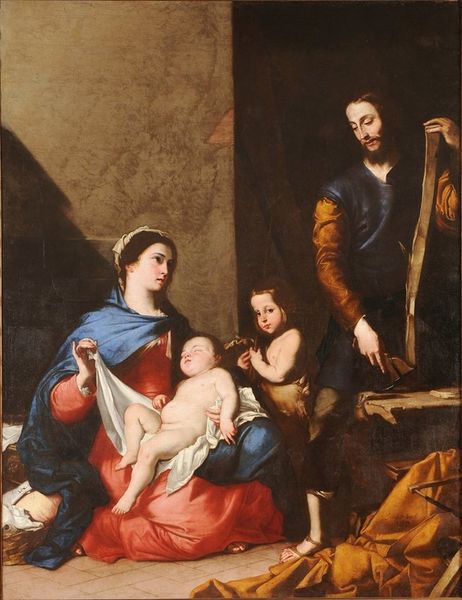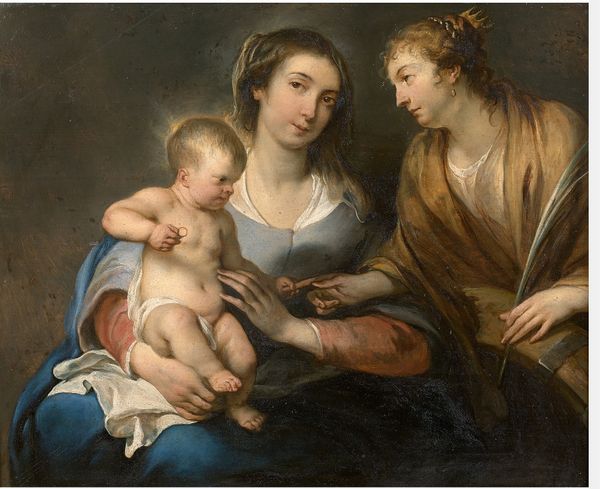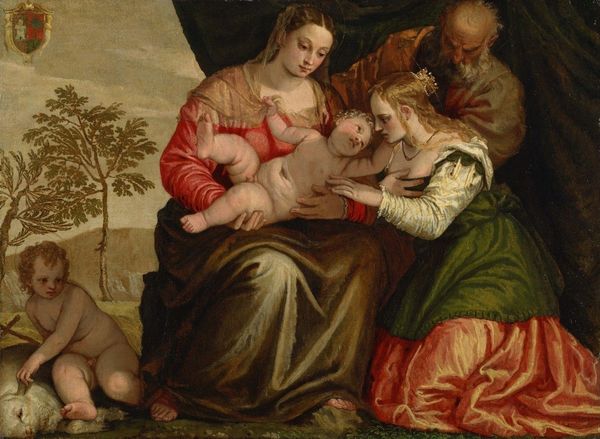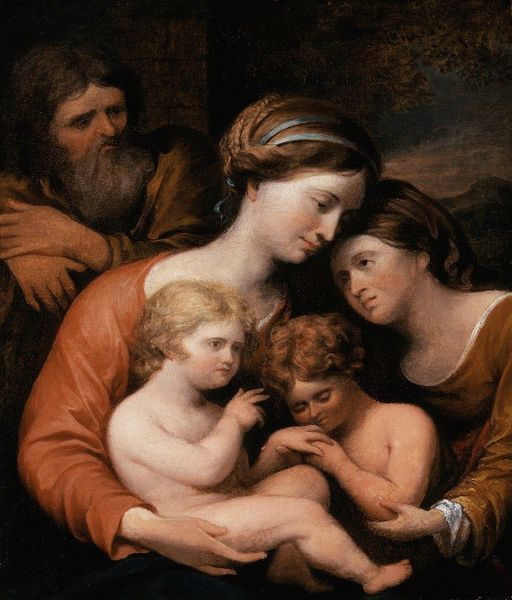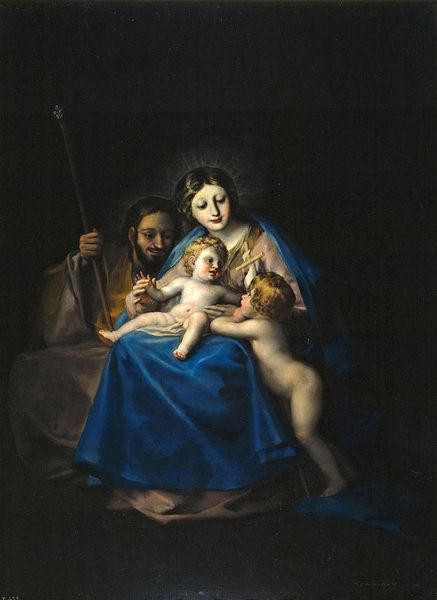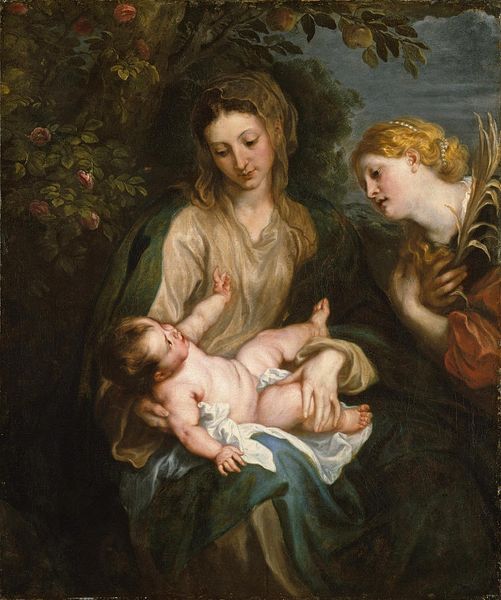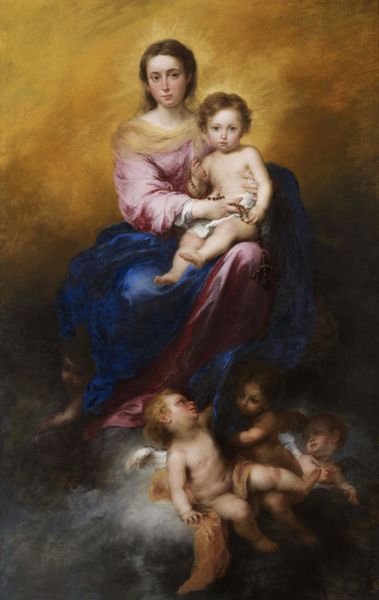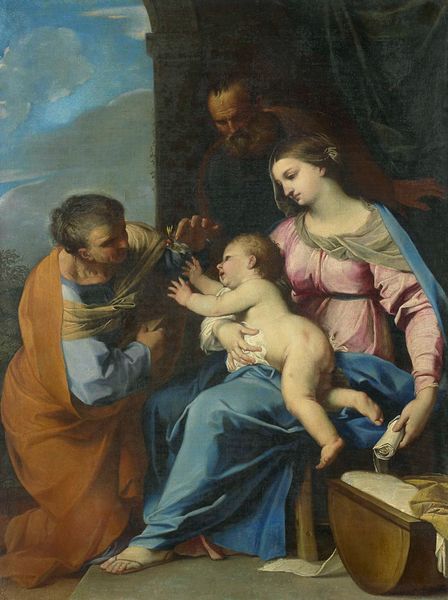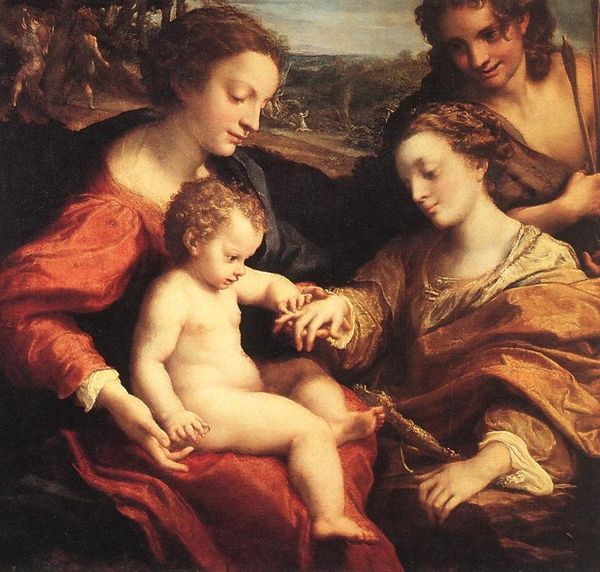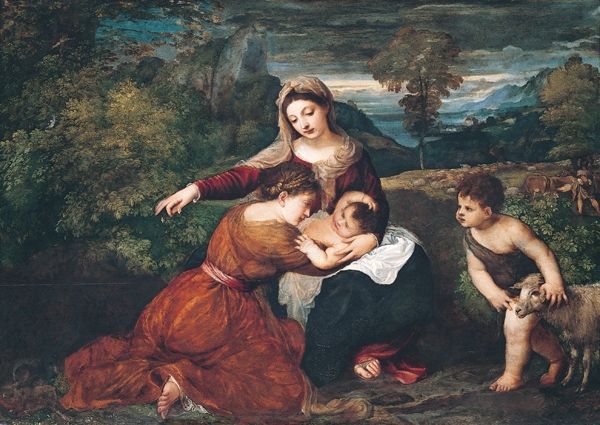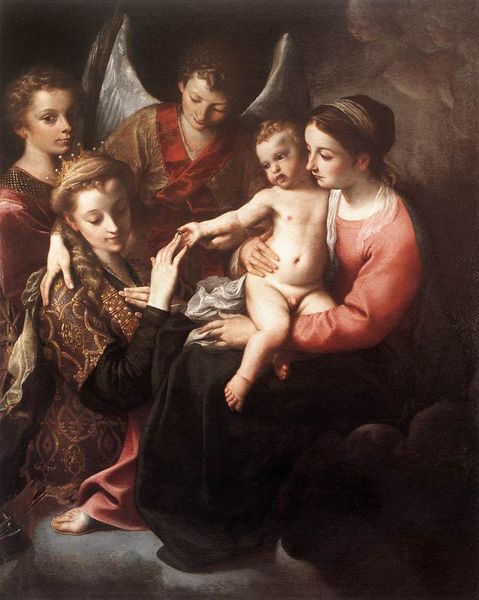
painting, oil-paint
#
baroque
#
painting
#
oil-paint
#
group-portraits
#
chiaroscuro
#
history-painting
#
italian-renaissance
Copyright: Public Domain: Artvee
Editor: We're looking at "The Holy Family with Saints Anne and Catherine of Alexandria" by Jusepe de Ribera, created in 1648, using oil paint. It’s really striking how Ribera captures textures – the fabrics, the skin… How do you approach interpreting this kind of work? Curator: I'm particularly interested in the socioeconomic conditions under which these materials became available. The sourcing of pigments for the oil paints, the labour involved in preparing canvases, even the kind of clothing depicted - it all speaks to systems of power and trade at the time. Notice the richness of the ultramarine, likely derived from lapis lazuli; its presence signals patronage and expense. Editor: That's fascinating! So you see the materials themselves as holding meaning? Curator: Precisely. Ribera's use of chiaroscuro wasn't just a stylistic choice. Think of the societal context: were those darker tones linked to cultural events or preferences during that time? Editor: I see your point. Is this exploration limited to the creation process? Or does consumption also affect this painting? Curator: Absolutely! We need to consider the art market, how works like these were acquired, and by whom. Who had access to these images, and how did they reinforce or challenge the social order? Editor: This gives me a completely different perspective. It's not just about aesthetics, but the tangible realities that enabled the painting's existence and later reception. Curator: Exactly! The act of viewing and owning art is a part of the exchange between creation, labor, and value within the world. Hopefully, we can be mindful of that, to better understand how art acts as a physical document with much to teach us about that relationship.
Comments
No comments
Be the first to comment and join the conversation on the ultimate creative platform.
